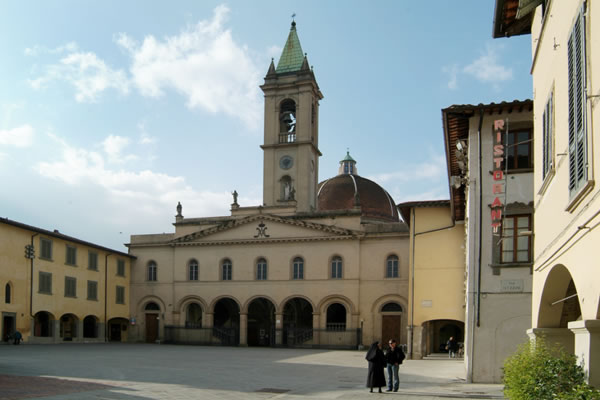The Basilica of Santa Maria delle Grazie coasts all the western side of Masaccio Square. The complex is dated back to the late fifteenth century, progressively enlarged and modified several times, both after a serious fire in 1596 and after the bombings of World War II. The construction of the temple is dated back to 1484, immediately after the miracle of “Monna Tancia”: it was “Basilica” from 1929, but was elevated at “Santuario Mariano” (Marian Shrine) in 1986. Proceeding through horizontal lines, confirmed by the railing, the architectural mass brings movement from the slim arcade with stairs and from the series of arched windows of the first floor, culminating in the pediment of the dentate triangle, in four statues (those of the Saints Agostino, Giovanni Battista, Lorenzo and Francesco) and in the pointed bell tower. At the center of the back wall of the two stairs there is a large terracotta polychrome glazed by Giovanni della Robbia representing the Assumption of 1513.
You can enter the Sanctuary toward two staircases and two large wooden doors dated 1697: three great aisles, punctuated by three spans on monolithic columns, Corinthian capitals and lowered arches. The domed archways was frescoed at the end of the seventeenth century by Giuseppe Nasini and Vincenzo Ferrati. The main altar (behind which there is a Madonna with fourteenth-century Florentine school child) was rebuilt after 1596 to a design by Bernardo Buontalenti. On the left side of the altar are frescoed three moments of the miracle of Monna Tancia, whose author, according to Vasari, is a pupil of the Perugino. After 1720 it was built and joined to the old church a large chapel, completely rebuilt at the end of the 50s, after the bombings of 1944.




